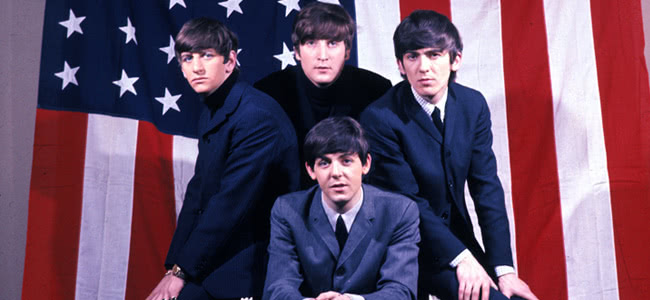Countless fans have tried to learn the chord and innumerable cover bands around the world do their best to copy it since the song’s release in 1964.
However, a British Mathematician has opened up about getting closer than anybody else to replicating the impossible opening chord from The Beatles’ hit single “A Hard Day’s Night”, The Age has reported.
Dr Kevin Houston, from the University of Leeds, spoke recently at the British Science Festival. “The opening chord to “A Hard Day’s Night” is a mystery,” he said.
“It turns out that nobody really knows what it is. People who do know are a bit cagey about it. George Martin probably knows quite well but I think he’s quite happy not to tell people.”
Dr Houston used sophisticated software to split up the sound on the record and presented it on a computer screen at the festival, revealing a pattern showing which notes were most prominent. Visually, it proved a far simpler equation than a previous study undertaken by Dalhousie University’s Professor Jason Brown showed 4 years ago.
Dr Houston went on to challenge, not dispute, the importance of Professor Brown’s argument that missing guitar notes were replaced by Beatles producer George Martin playing a piano.
The British scientist believes George Harrison was playing a straightforward F add9 on his 12-string electric Rickenbacker guitar while appearing to have his thumb curled round the neck of the guitar, pressing down the bottom E string at the first fret. It’s also established that John Lennon was playing the same chord on an acoustic guitar.
“I wouldn’t like to say that we’ve definitely got it right, but I think we’ve put the record straighter. It makes mathematical and musical sense,” the scientist reasoned at the popular annual science festival.
Though both scientists used the same mathematical process, called a Fourier transform, to dissect the Beatles chord, Dr Houston was firm in his results over the Canadian professor’s.
“Jason used the right mathematical technique and fed the sound through a Fourier transform that tells you all the frequencies and their amplitudes, but he got it completely wrong,” said Dr Houston.
“He came up with 29,000 frequencies and assumed the most important frequencies were the loudest. That was a mistake.”
Prof Brown’s solution suggested that Harrison was playing the notes A, D, G and C on just the four middle strings of his12-string guitar.
Both arguments were knocked back by fellow mathematician, teacher and guitarist Ben Sparks who was also taking part in the presentation.
“It beggars belief to say George Harrison was dodging the first string; its laughable,” he said.
“Trying to play four strings in the middle of a 12 string is bloody hard, and most musicians would think it’s ludicrous to have John Lennon play just a high C,” Sparks said, continuing to deride the British scientist’s theories of the other band members’ roles in the classic hit.
Indeed, it remains a puzzle as to what Paul McCartney’s role was on the bass guitar; whether he was playing a full note, a harmonic or both.
Perhaps more pulling apart of the first 4 seconds of “A Hard Day’s Night” is needed or maybe it’s a secret best kept to The Beatles themselves.
The continued study into The Beatles’ historic music comes as John Lennon’s killer seeks parole after 31 years after his murder.

































